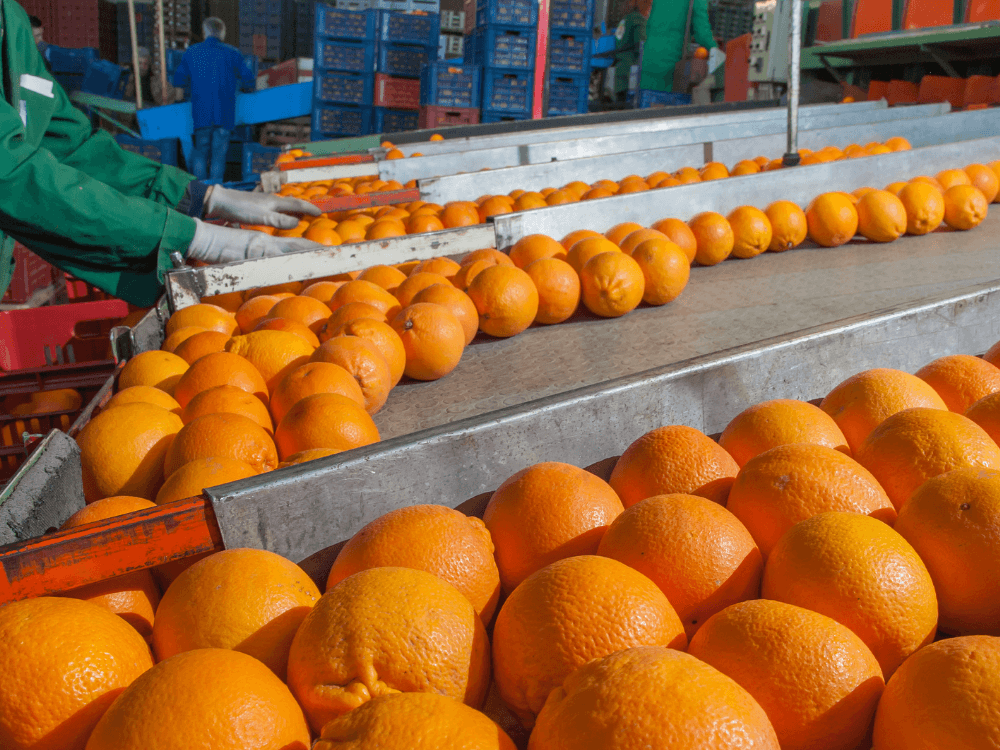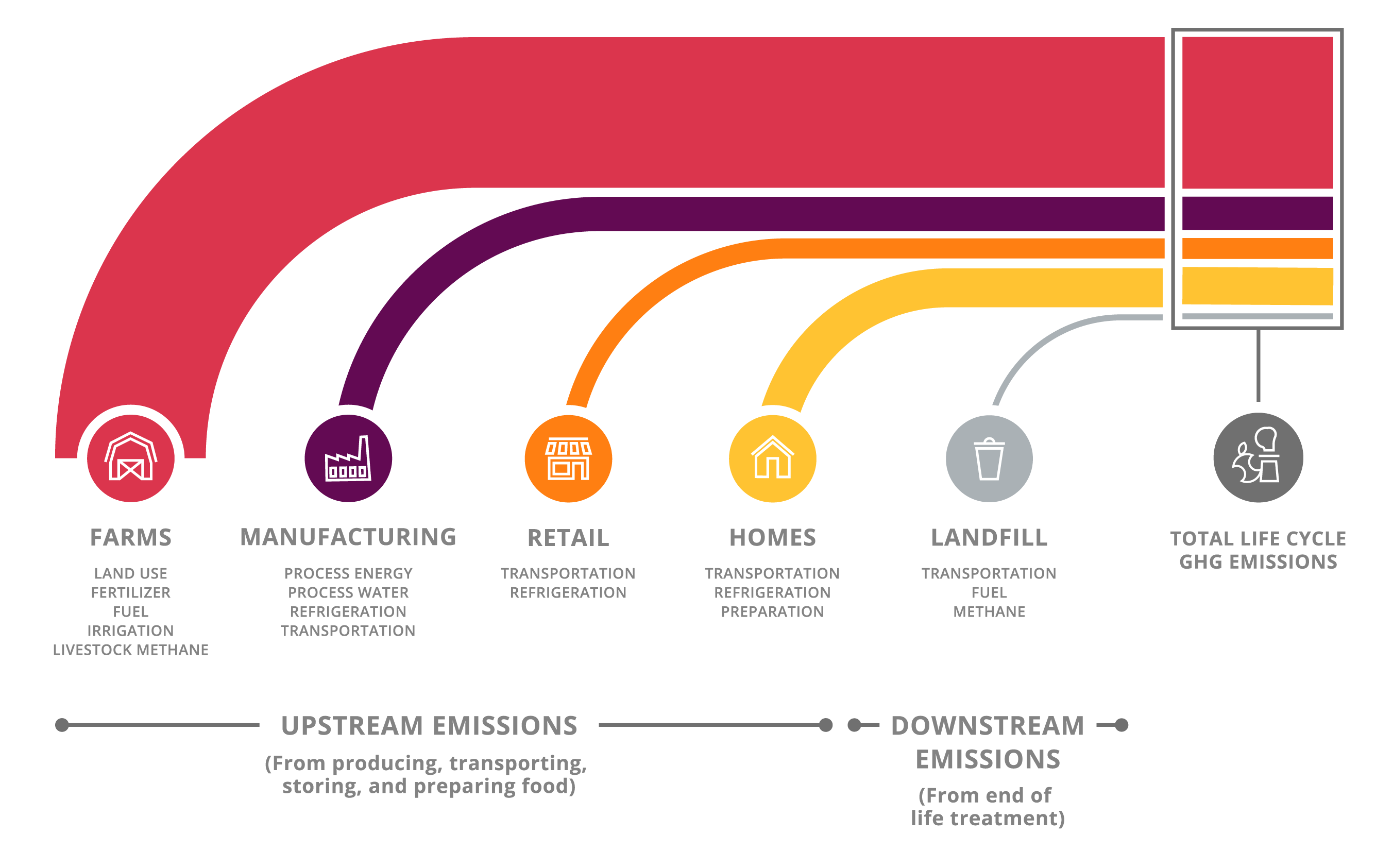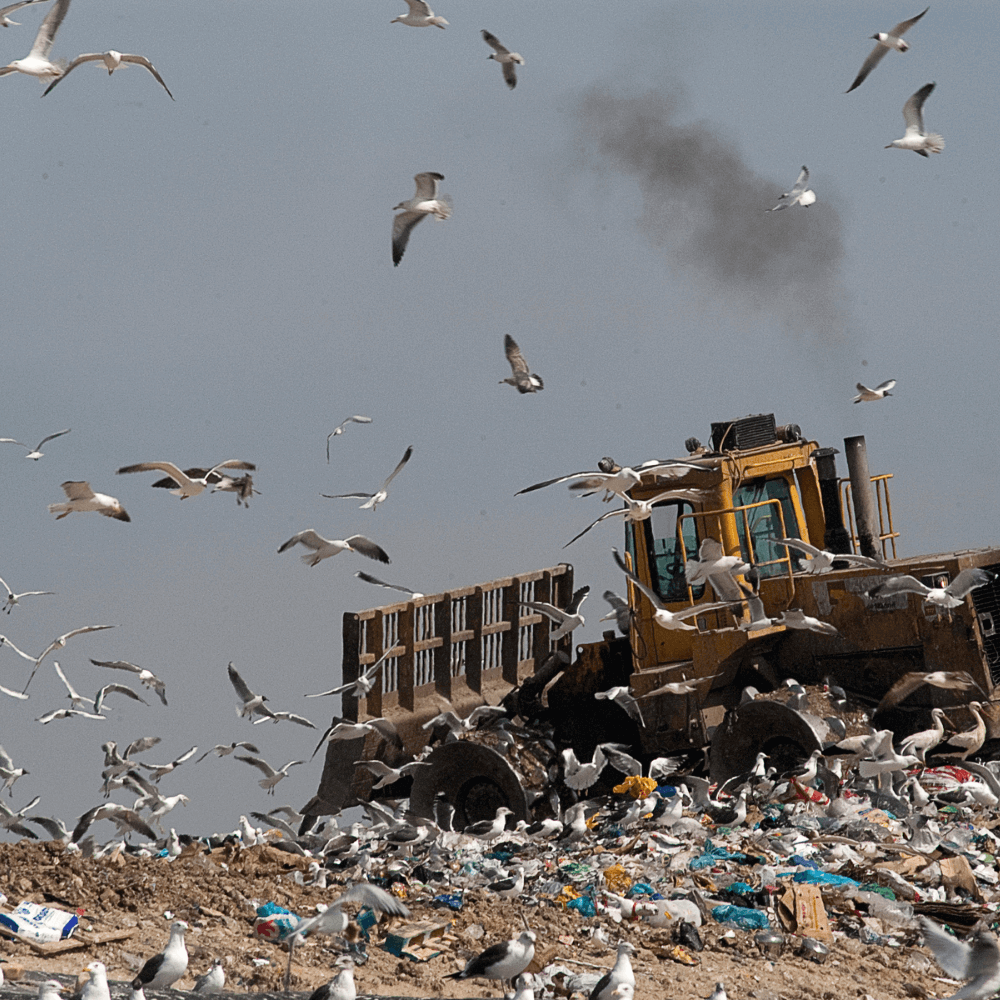Climate and Resources
Food Waste Impacts
Climate and Resources
Wasting food has an astonishingly massive greenhouse gas (GHG) footprint. This is due to the methane produced from food decaying in landfills, the resources it takes to grow, transport, cool, and cook food, and the conversion of native ecosystems to agriculture. Fortunately, it is a solvable problem that offers some "low-hanging fruit" for GHG reductions.
Full implementation of the food waste solutions modeled by ReFED would reduce greenhouse gas emissions by 104 million metric tons of CO2e each year — nearly as much as taking 25 million gas-powered cars off the road. It would also generate an economic return of $78 billion each year. And importantly, reducing food waste also leads to several key co-benefits that get at critical issues of climate justice, climate adaptation, water scarcity, and biodiversity loss.

GHG Emissions from Food Waste
The United Nations estimates that if global food loss and waste were a country, it would rank third in the world for GHG emissions after the U.S. and China. In the U.S. alone, an estimated 38% of all food ends up unsold or uneaten each year, and its production, transport, storage, preparation, and ultimate disposal produce the same amount of greenhouse gas emissions as 84 coal-fired power plants. That magnitude of emissions is hard to comprehend, but understanding the GHG footprint of food loss and waste becomes easier when we take a life-cycle view of food’s journey through the supply chain.

The emissions produced at each stage of the food system vary, and they add up as food progresses from farm to fork to disposal. Notably, preventing food from going unsold or uneaten is a far more impactful climate solution than recycling food scraps through compost or anaerobic digestion–when food is composted, it still uses all of the resources to produce it, whereas preventing surplus food can fundamentally reduce demand. (This follows the guidance provided by EPA's Wasted Food Scale.)
Farm
Carbon Dioxide: Land use and land use change | Fertilizer, pesticides, herbicides | Pumping water | Fuel for machinery
Methane: Land use and land use change | Enteric emissions | Manure management
Manufacturing
Carbon Dioxide: Transportation | Energy for heating, power | Water
Fluorinated Gases: Chilling
Consumer-Facing Businesses
Carbon Dioxide: Transportation | Energy for heating, power
Fluorinated Gases: Chilling
Homes
Carbon Dioxide: Transportation to home | Energy for refrigeration, freezing, washing, cooking
Donation
Emissions: Transportation to food bank
Offsets: Avoided food production
Industrial Uses
Emissions: Processing and transportation
Offsets: Avoided fuel or feed production
Animal Feed
Emissions: Processing and transportation
Offsets: Avoided feed production
Anaerobic Digestion
Emissions: Collection and transport to digester | Process Energy | Fugitive emissions during digestion | Transport to and emissions at site of digestated application
Offsets: Fertilizer offset | Energy capture | Soil carbon storage
Compost
Emissions: Collection and transport to facility | Fugitive emissions during decomposition | Transport to and emissions at site of compost application
Offsets: Fertilizer offset | Soil carbon storage or land productivity benefit
Land Application
Emissions: Fugitive emissions during decomposition | Transport to and emissions at site of compost application
Offsets: Fertilizer offset | Soil carbon storage or land productivity benefit
Sewer
Emissions: Energy to grind in sink | Energy to operate wastewater treatment plant
Offsets: Energy capture (not common in US)
Incineration
Emissions: Collection and transport to facility | Process energy for operation | Combustion emissions
Offsets: Energy capture (often heat to electricity)
Landfill
Emissions: Collection and transport to facility | Fuel to operate machinery | Decomposition emissions
Offsets: Energy capture (some landfills) | Soil carbon storage (sometimes included)
The Methane Opportunity
Recently, the global community has lasered in on methane (CH4) as a way to slash emissions within a more shortened time frame. Methane is a powerful greenhouse gas – 80 times more potent than carbon dioxide on a 20-year time frame. The IPCC reports that methane concentrations have increased rapidly since 2007, largely driven by fossil fuels and agriculture sectors. However, methane has a relatively short residence time in the atmosphere - it breaks down after about 12 years on average. Therefore, targeting methane sources now will reduce atmospheric GHG concentrations with effects that will be felt in just a decade or two - which is critical for limiting warming by 2050.


Municipal solid waste (MSW) landfills represent the third largest source of methane emissions in the United States, accounting for 16% of US methane emissions in 2022. Food waste is the number one material in our landfills —EPA estimates that food scraps represented 24% of material sent to landfill — and the main contributor to methane emissions produced from the decomposition of organic matter (food, yard trimmings, etc.) in solid waste under anaerobic conditions. ReFED’s analysis shows that 32.4 million tons of surplus food were sent to landfill in 2023, releasing over 800,000 metric tons of methane. EPA research indicates that diverting food waste from landfill reduces the methane generation potential by 33%.
Beyond landfill methane, reducing the amount of meat and dairy wasted could also serve to reduce livestock-related methane emissions. Together, enteric fermentation and manure management made up 36% of US methane emissions, making agriculture the largest contributing sector. Currently, beef and dairy products make up 10% of all surplus food. Reducing waste of these products could reduce demand pressures, ultimately leading to less overproduction and lower methane emissions along with that.
Emissions from surplus food can be categorized in the following framework:
Downstream emissions from end-of-life treatment
Food scraps decaying in landfills produce methane. And even if they are recycled, composted, digested, sent down the sewer, or fed to animals – some emissions are still generated. However, there will always be some food scraps that are considered inedible or some unavoidable waste. Finding methods to use that waste in products like livestock feed, compost, or biogas are important ways to reduce the overall emissions profile.
Upstream emissions from producing, transporting, storing, and preparing food
Food requires inputs like water, fertilizer, and energy to be grown, processed, moved around the country, and prepared to be eaten. Soil interactions and livestock animals also produce emissions of nitrous oxide or methane. Each step of the supply chain adds “embodied emissions,” which are then wasted if the food is not eaten or used. Preventing food waste should, in theory, reduce the demand for further production – and thus avoid the associated life cycle emissions. For most food products, the emissions associated with producing the food vastly outweigh any emissions associated with end-of-life, highlighting the importance of food waste prevention at the source.
Upstream emissions from land use associated with food production
Producing food requires significant areas of land for farming and grazing. When natural ecosystems are converted for agriculture, the carbon stored in the soil and plants are released, and can only be restored over decades to centuries. As we look forward towards a population in 2050 that the United Nations predicts will need about 50% more food than we have today, we must consider where that food will come from. Reducing the amount of food that goes to waste lowers overall demand, reducing pressures to convert more native ecosystems to agriculture.
Top Food Waste Solutions for Reducing GHG Emissions
The good news is that the problem of food waste is eminently solvable – multiple solutions already exist, and many of them are "shovel-ready," just needing implementation rather than invention to reap big benefits. ReFED's analysis identified the ten food waste solutions most effective at reducing greenhouse gases, shown here:

You can see the GHG emissions reduction potential of more food waste solutions in the Solutions Database from the ReFED Insights Engine.
View SolutionsWhat You Can Do
Explore the Impact Calculator
A special resource that quantifies the GHG emissions, water usage, and lost meals associated with wasted food, and enables an impact analysis for scenario planning. The Impact Calculator is part of the ReFED Insights Engine, an information hub featuring data, solutions, and more about food waste.
Learn MoreStay Informed and Sign Up for Our Newsletter
ReFED's mailing list is a great way to stay up to date on the climate science around food waste, as well as track our work in the space. We also regularly share resources and announcements for a range of stakeholder audiences.
Subscribe to NewsletterEngage with Partners Through the Food Waste Action Network
ReFED’s Food Waste Action Network (FWAN) is a space designed to inspire collaboration between individuals and organizations from across the food system and from a diverse set of backgrounds. FWAN members get access to networking events, lunch ‘n’ learns, innovation demo days, and more.
Learn More and JoinConnect with us about Funding Needs & Opportunities
ReFED directly supports our network of solution providers by highlighting their funding needs to a select group of capital providers through our Food Waste Funder Circle. The Food Waste Funder Circle features regular events for solution providers to make a pitch to the capital provider members.
Submit your formSupport Our Work
Your support will be used to help reduce food waste across our food system, which offers so many critical benefits. It's a key solution to the climate crisis; it assures we aren't wasting our limited natural resources and maintains biodiversity; it helps businesses be more successful and sustainable – and it gets more food onto the plates of people who need it.
Support our WorkImpact Resources

The Methane Impact of Food Loss and Waste in the United States
Global climate leaders have zeroed in on methane reduction as a key “emergency brake” in the fight against climate change. Methane is a powerful and short-acting greenhouse gas that only persists in the atmosphere for 12 years. Therefore, reducing methane emissions now has a cooling effect that will be felt in just a decade or two—which is crucial for limiting near-term warming.
Solutions Database | Insights Engine
Impact Calculator | Insights Engine
ReFED Catalytic Grant Fund
Links
EPA: From Farm to Kitchen: The Environmental Impacts of U.S. Food Waste
Download ReportConnecting Food Loss and Waste to Greenhouse Gas Emissions: Guidance for Companies
Download ReportIPCC Sixth Assessment Report: Climate Change 2022: Mitigation of Climate Change
Download ReportGet more news and updates from ReFED, including our press releases and newsletters.

